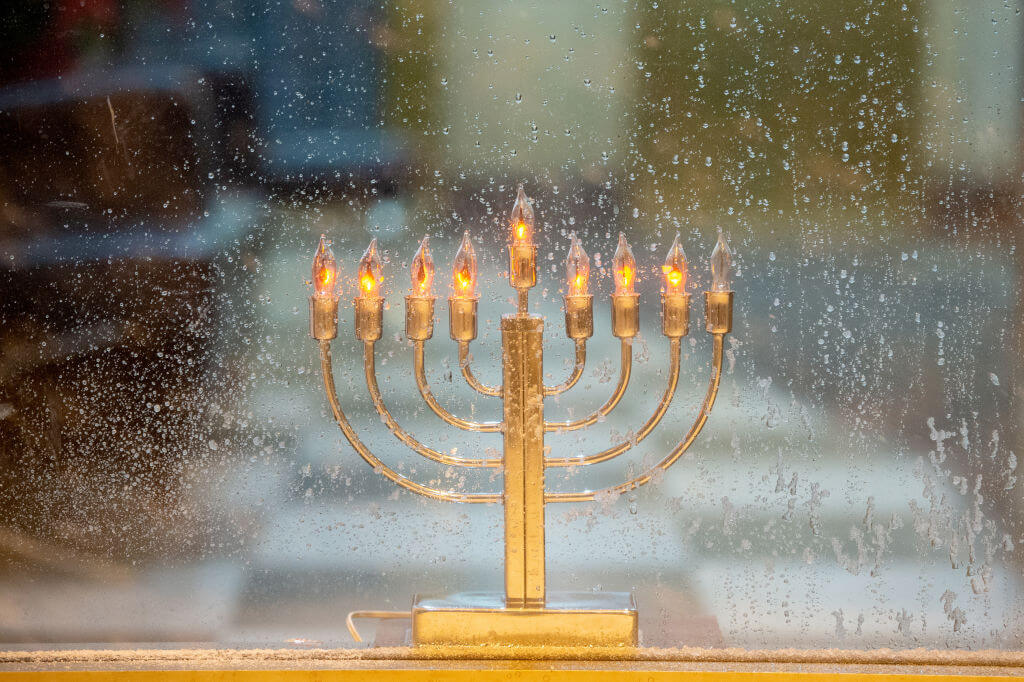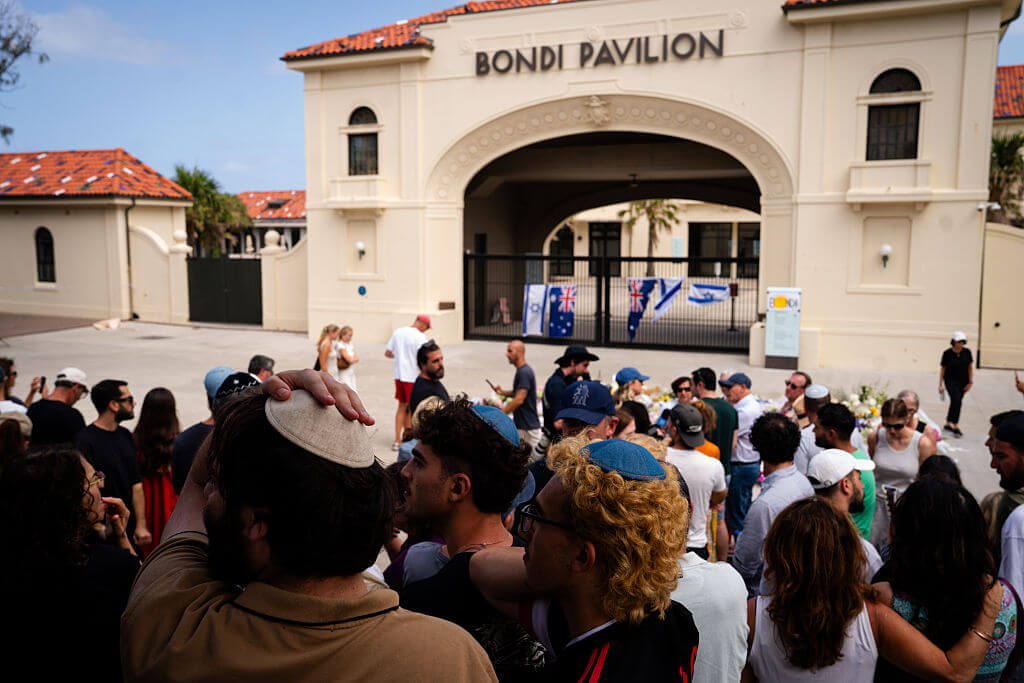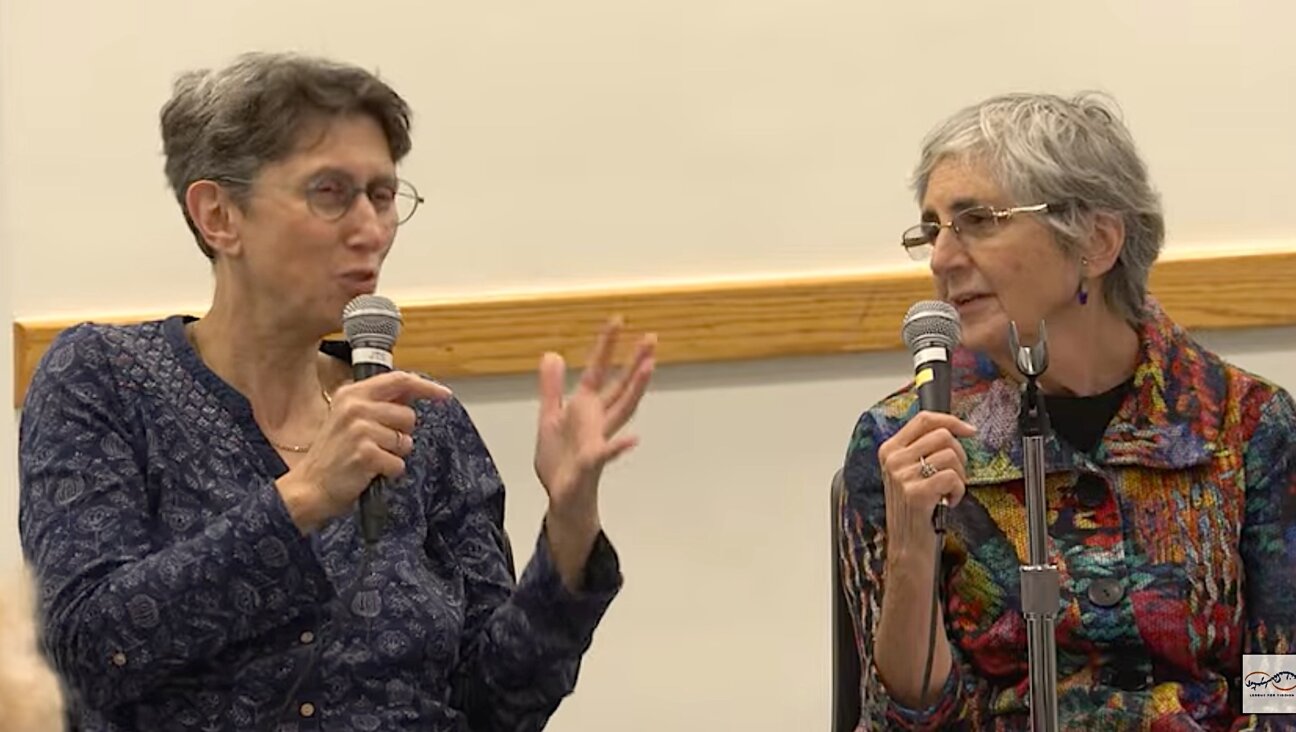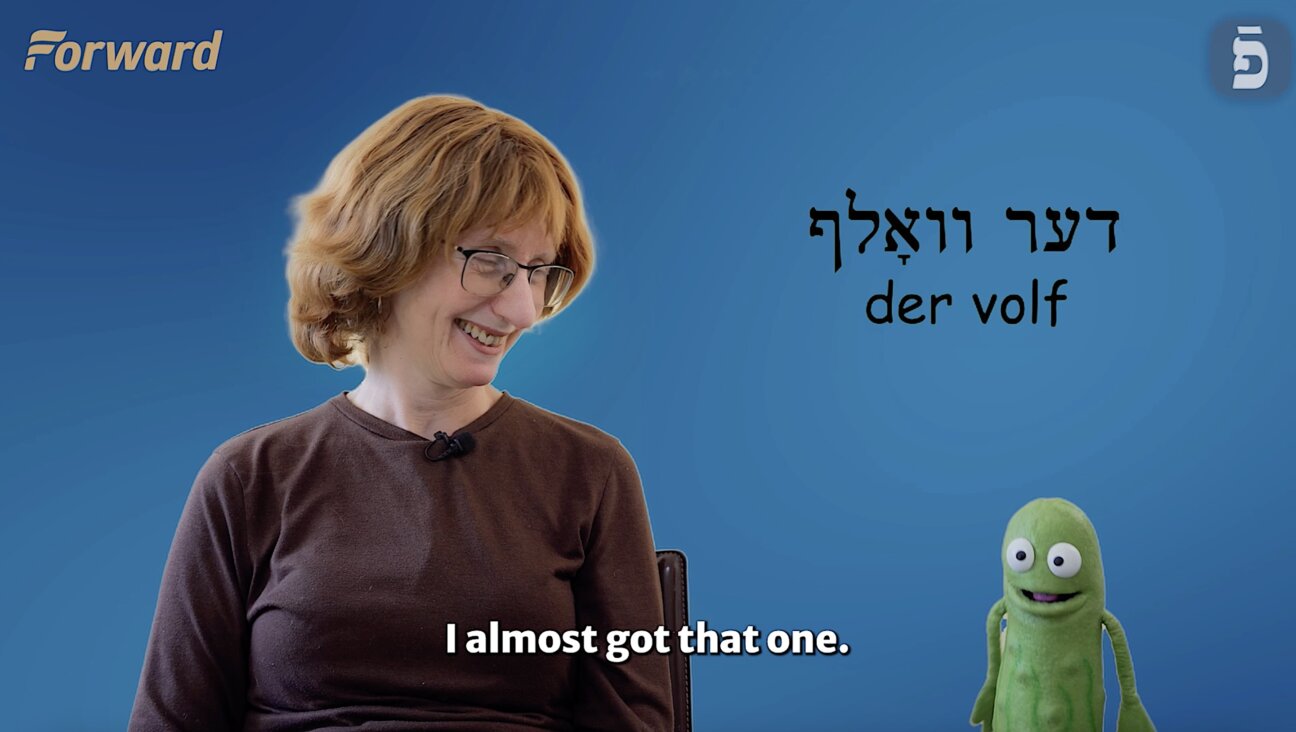Couple’s Wedding Project Becomes a Side Business
Leaving Saul Zipkin and Aliza Dzik’s New York wedding in 2001, guests took with them the customary keepsake bentcher — the mini-prayer book containing the grace after meals. But while theirs featured the names of bride and groom on the cover, along with mealtime blessings and songs, this wasn’t an edition of any bentcher their guests already had at home in the drawer where they keep yarmulkes.
Theirs was a handsome off-white book, created by the couple themselves for the occasion. Dzik, a graphic designer, had laid it out, and Zipkin, a lawyer skilled in Hebrew, had edited it. The bentcher had the songs the pair loved, translations they preferred and an accessible yet traditional design: “A book you wanted to hold,” Dzik said of Eit Hazamir Higiyah, or “The Time for Joyous Song Has Arrived,” as the booklet was named. Dzik has, since her wedding, personalized the book for more than 50 Jewish occasions, and its popularity is emblematic of a growing desire on the part of young Jewish couples to involve their loved ones by personalizing the spiritual side of an event.
“If you haven’t made a bentcher and you haven’t had a chupah-making party and had a whole [Sabbath] weekend, you’re not keeping up with the Jewish Joneses” said Vanessa Ochs, director of Jewish studies at the University of Virginia.
In Dzik and Zipkin’s case, the concept seemed natural: A friend who’d made his own inspired them. “It’s something we wanted to do before we were engaged,” Dzik said. Over the course of several months before the wedding, Zipkin had pored over old bentchers and songbooks for material, translating the gender-specific liturgy of traditional songs into a more gender-neutral language. Dzik had designed a slightly larger bentcher than usual, spacing Hebrew, translation and transliteration over pages made with heavy paper. “Pairing of English and Hebrew fonts is not so easy,” said Dzik, who has just earned a master’s degree in graphic design from Yale University. (Among other popular custom-bentchers made by the overeducated is Anim Zmirot, made by Harvard Alums in 1999.) The couple even designed a Hebrew font for the book’s cover, dubbing it Nishron, a combination of Hebrew words similar to their last names. “In the last few weeks before our wedding, we would sit together with our laptops, with him translating and me designing,” Dzik said.
The day came; some 300 bentchers made their way to Sabbath tables across America, and Eit Hazamir Higiyah has, well, arrived.
A year passed — and then e-mails started arriving. Friends — and dinner guests of friends — tracked down the pair prior to weddings and asked for editions with personalized covers. Zipkin and Dzik hadn’t planned on getting into the bentcher business. “We were kind of like, huh? Did we make it for just for us?” Dzik said. But since then, they have negotiated with a local printer and started a side business that has operated steadily by word of mouth. Now, Dzik gets two or three e-mails a month on a regular basis, mostly requesting wedding bentchers. Congregations have used the bentcher for special events; a lesbian friend used it for a commitment ceremony with a partner. “When it’s time for bentching [saying the Grace After Meals], I’m glad they’re holding mine,” Dzik said.
Ochs, who writes about Jewish ritual, discovered Eit Hazamir when her daughter’s fiance brought it home from a wedding. Struck by what she called “fresh and unapologetic” translations, she subsequently got permission from the book’s creators to use the translation of the song “Eishet Chayil” (“A Woman of Valor”) in “Sarah Laughed” a book that she originally published in 2004 (McGraw-Hill). “She would trade like a sea merchant in order to obtain goods for her family,” one of Zipkin’s lines reads. A more literal translation would be: “She is like a merchant’s ships, obtaining sustenance from afar.”
Especially important to the pair, who like to sing at their Sabbath table, was the inclusion of some 65 songs. Government attorney Adam Szubin, who used Eit Hazamir for his 2004 wedding, explained, “We wanted a bentcher that offered Jewish songs, Israeli songs, some Yiddish songs… we loved the design.”
Dzik told of how, by taking an active role in planning the spiritual side of a wedding, a couple changes their event “from being a party thrown by their parents to being a ceremony actually inspired by the community.”
Szubin agreed. “Otherwise it’s very passive for the bride and groom,” he said. “I’ve been to three different weddings where people compose their own music, [though] maybe because I’m in a fruity crowd.”
Eli Kintisch, a former reporter with the Forward, is a writer at Science magazine.














